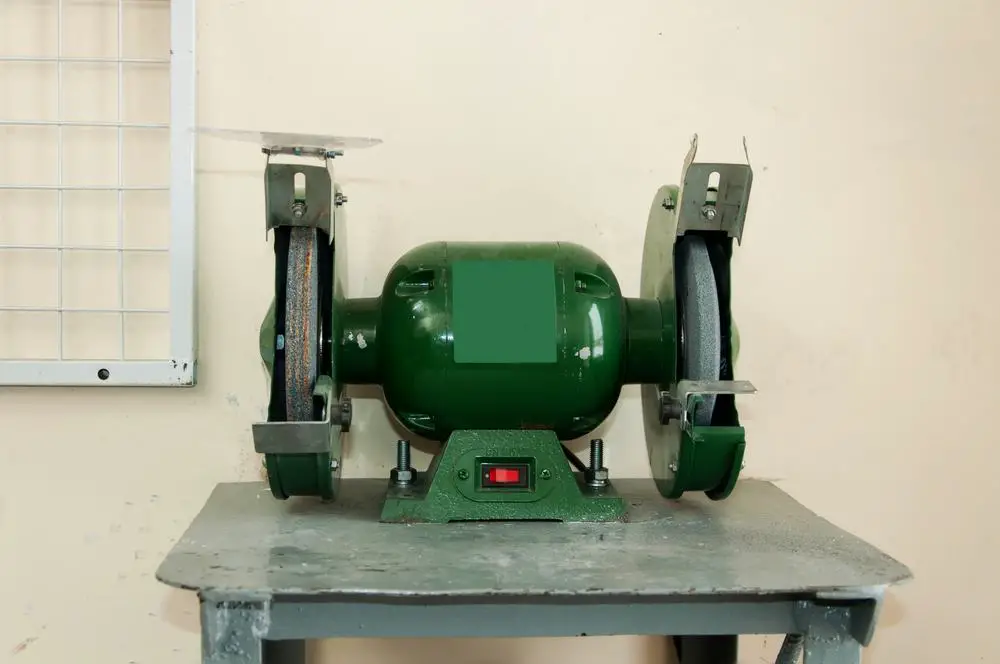A bench grinder is a versatile equipment you want to add in a home tool kit. It can sharpen metal tools, shape them and rid of rust keeping them in top-notch condition. What’s more, it can repair drill bits, cold chisels, and cutting tools. Of course, it depends on the type of bench grinder you purchase as they come in different sizes and speeds.
If looking for simple DIY equipment, then bench grinder with a 0.25 or 0.5 is sufficient. However, homeowners performing heavy-duty work need equipment with larger motors and larger wheels.
Our Recommendation: Top 5 Best Bench Grinders
Essential Parts to Look For When Buying a Good Bench Grinder:
Bench Grinder Motor
The horsepower affects the number of revolutions the grinding wheels can make in a minute. If looking for a machine to work on hard metals, e.g., thick steel, look for one that delivers fast speeds. A good grinder should have a speed ranging from 3000-3600 rpm.
Tool Rest
It is used to hold the tool when you are not working on it. A tool rest comes in handy when you need to adjust the speed of the grinder while working on a device or when you need to change wheels. Also, if sharpening several drill bits, you just need to line them up on the tool rest, so you don’t have to walk back and forth to grind the next.
Eye Shield
A good bench grinder should have an eye shield. It is made of plastic and is fitted above the opening for you to work on the tool you are grinding. An eye shield protects your eyes and face from sparks when working on a tool. It is also essential to wear eye protection too.
Spark Deflectors
Grinding wheels are fitted on the side of the machine and are covered by spark deflectors. The deflectors prevent sparks from flying when working on metal. They contain the fragments, so they don’t fly haphazardly in your working space. Spark deflectors also protect your fingers when grinding the wheel.
The Wheels
There are different types of wheels. A good bench grinder should allow you to change the wheels to match your grinding needs. A straight wheel is the most common kind and is used to sharpen chisels, grind surfaces, and perform cylindrical and centerless grinding.
A tapered wheel, on the other hand, is used for delicate jobs like grinding threads or sharpening gear teeth. The wheel tapers towards the edge, which makes it easy to reach the grooves. Some grinders come with cylindrical wheels ideal for sharpening huge metal sheets. The wheel is large and hollow to handle big workpieces.
There’s also the diamond wheel grinder used for working on hard material. The wheel is coated with small bits of diamond at the edge allowing it to cut anything. Also, if looking for a bench grinder to sharpen saw blades look for grinders with a saucer wheel.
Grit Type
The grit is another essential factor that determines the sharpness of the tool. The most common grit type is the aluminum oxide grit, which is available in brown and gray colors. It is ideal for grinding tools made from low and high carbon steel. Pink and white grit types are used on harder steel materials as it needs cool cutting action to avoid burns.
If looking for a bench grinder to sharpen softer metals like aluminum, you need silicon carbide grit. This type is available in black and green colors. The black silicon carbide is extremely sharp and is ideal for sharpening plastic materials too. Green silicon carbide grit is sharper hence suitable for sharpening tools made of strong metals like plasma or titanium sprayed material.
Check Out: Our Pick for Best Bench Grinder
Grit Hardness
Grit hardness is rated from A-Z, with Z being the hardest. As such, if working on harder material, you want a soft grinding surface. Wheels with hard grit last longer, but it shouldn’t be too hard as it damages what you are working on.
Grit Size
The grit size affects the finish you achieve when grinding. They come in four categories: fine, coarse, medium, and superfine grit. Coarse grit ranges from 16-24, medium grit from 36-60, while superfine grit has sizes from 150 and above. Wheels with coarser grit remove material faster but leave the surface rough. If removing less material, consider wheels with a finer grit.

